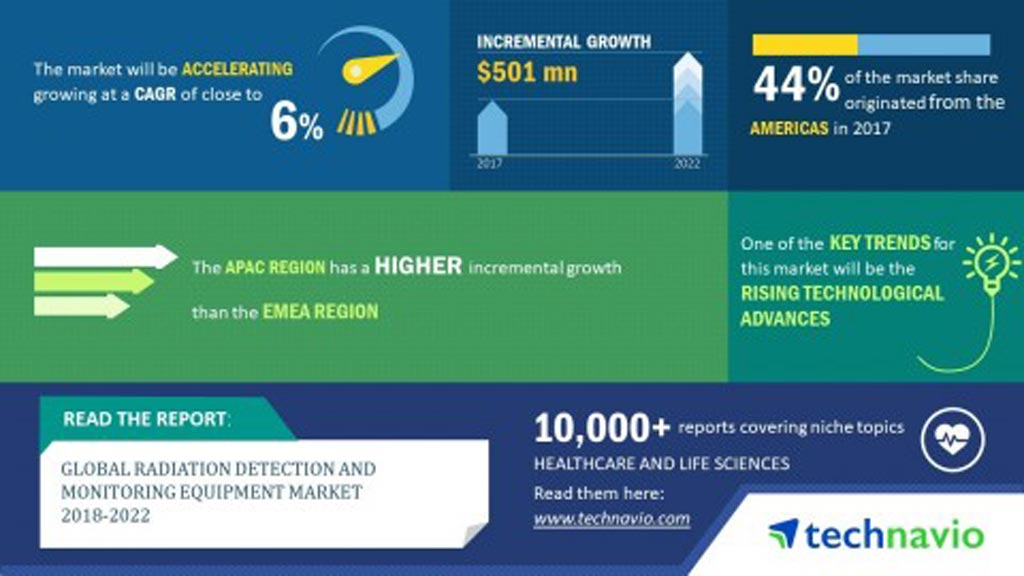Global Radiation Detection Market Driven by Healthcare Facility Demand
By MedImaging International staff writers
Posted on 05 Nov 2018
The global radiation detection and monitoring equipment market is projected to grow at a CAGR of nearly 6% during the period 2018-2022, driven by increasing demand from healthcare facilities due to the rising use of radiation-based equipment in the diagnosis and treatment of various health problems.Posted on 05 Nov 2018
These are the latest findings of Technavio Research, (London, UK), a global technology research and advisory company.

Image: The continued growth of the global radiation detection and monitoring equipment market is driven by increasing demand from healthcare facilities (Photo courtesy of Technavio Research).
During radiotherapy, the radiation dose administered to patients needs to be closely monitored with the use of radiation monitoring systems in healthcare settings. This is expected to boost the demand for radiation detection and monitoring equipment over the next five years.
Geographically, the Americas led the global radiation detection and monitoring equipment market in 2017 with a share of almost 44%, followed by the Asia Pacific and Europe Middle East and Africa (EMEA) regions, respectively. The Americas is expected to continue dominating the global market during the forecast period, although Asia Pacific is likely to record the fastest growth.
Growing technological advances is one of the key emerging trends in the global radiation detection and monitoring equipment market. The technology applied in radiation detection and monitoring devices is evolving continuously due to enhancements in the range and readout methods, as well as additional features such as global positioning systems (GPS), networking options, and storage of the accumulated dose. A majority of the established radiation monitoring system manufacturers in the market are focusing on expanding their radiation detection services into new international markets. Several international and regional vendors are vying for their share of the radiation detection and monitoring equipment market, and players need to differentiate themselves to gain vital traction over their peers.
“Multifunction dosimeters that combine the capability to measure accumulated dose with features used in interdiction missions, such as the high sensitivity and fast response time of personal radiation detector are also being developed. Some new technologies use the complementary metal oxide semiconductor contained in mobile phone cameras for radiation detection and are being commercialized as mobile phone applications,” said a senior analyst at Technavio.
Related Links:
Technavio Research














